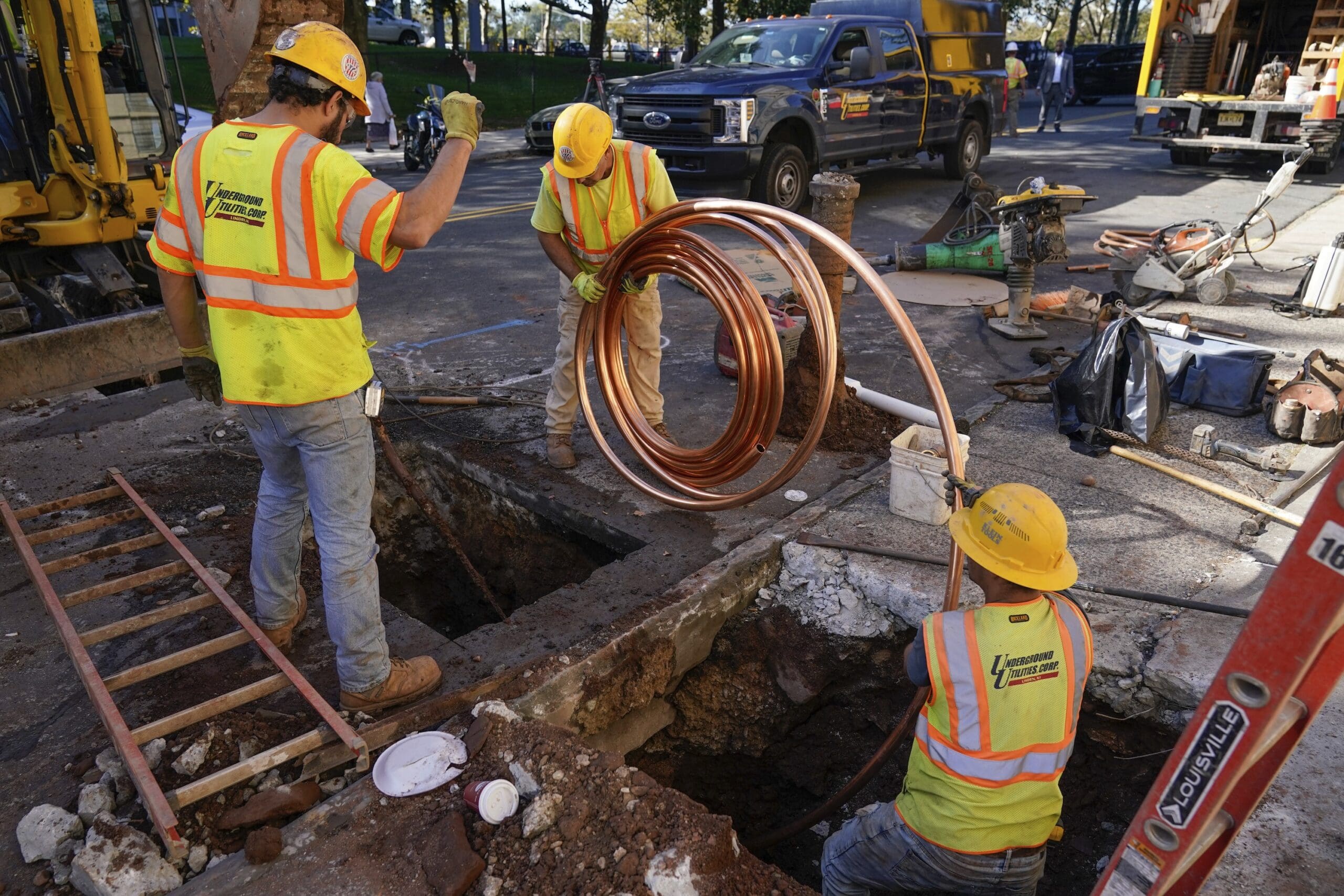Wisconsin Native American groups gather for a powwow on the eve of Indigenous Peoples’ Day
‘We’re here to promote education and awareness about the different Native American tribes in Wisconsin,’ said Bruce LaMere, a member of the Ho-Chunk tribe.

WAUSAU, WI — Excitement was in the air at the convention center in Wausau on Oct. 8 as the Central Wisconsin Indigenous Peoples’ Day Committee held its annual powwow.
Created to replace Columbus Day, Indigenous Peoples’ Day is celebrated on the second Monday in October. The holiday gives Indigenous nations across the country a day to celebrate their cultures and provide a more complete history of Christopher Columbus, and to honor the millions of Native Americans annihilated by European colonizers.
Tricia Zunker, a member of the Ho-Chunk Nation, one of 11 federally recognized tribes in Wisconsin, helped to organize the event.
“It’s an opportunity for the local Indigenous community to gather. … They came to this area for this event, and we have people from tribes in Michigan, South Dakota, Minnesota, Iowa, I mean, people came from all the directions,” Zunker told the American Independent Foundation.
“A powwow is a celebration for Indigenous people, where we come together, we sing, we dance, we have food, we have vendors. …. A lot of people, this is kind of like a practice of religion to some people,” said Aissa Roberts, a member of the Ho-Chunk Nation.
This year’s event focused mainly on the dancers, drummers, singers, vendors, food trucks, and on being together. But many folks said they were also deeply concerned about the issue of mining in the state and its impact on the environment.
Bruce LaMere is the president of the Central Wisconsin Indigenous Peoples’ Day Committee. He said that metallic sulfide mining, a method of extracting metals from rocks, has been proposed in Northern Wisconsin on Ho-Chunk land.
“They say they’re looking for copper and zinc and nickel, but they’re actually after gold. And investors are trying to get into that. They’re doing test drilling, but we’re opposing that quite a bit because it’s going to ruin the water,” LaMere said. He said that since the water in the north runs south, the runoff from the mining would flow into the Wisconsin River, which empties into the Mississippi River.
“All the wildlife are affected because eagles are there, deer are there, bears. Everything needs water, even the cattle and some of the farms,” LaMere said.
The Menominee Indian Tribe of Wisconsin is among those working against the Back Forty Mine, a proposed sulfide mine in Michigan close to the Menominee River, which sits on the border between Michigan and Wisconsin. The Menominee say the mining would disturb archeological sites and poison the rivers and lakes.
Sierra Club chapters in both Wisconsin and Michigan have consistently opposed the Back Forty sulfide mine proposal. The Menominee Indian Tribe has been fighting against the project in federal court since the Canadian company Aquila Resources first applied for permits in 2015. In 2022, large areas around the Menominee River were nominated to be included in the National Register of Historic Places, giving the Menominee people a say in what development can take place on the land.
LaMere is a member of the Wisconsin Indigenous Riders, a group of Native motorcycle riders. He said the group has recently begun doing rides around the state, making stops at all the reservations to bring awareness to the issue of missing and murdered Indigenous women.
“We started this a few years back because we found out that there wasn’t enough awareness in the state. And we’re trying to carry this message out to different Native communities. … We just want to create the awareness and have the families come out and support us. It is an epidemic here,” LaMere said.
Against the backdrop of the drum circles, the singers, and the jangling of decorative bells hanging from traditional Native clothing, Mattea Twinn, the Native American Coalition manager for the Democratic Party of Wisconsin, oversaw a booth where she chatted with voters about upcoming elections, candidates, and tribal sovereignty.
“If we aren’t out here protecting sovereignty, then we’re going to be unable to make our own decisions regarding land and water and air, and protecting those things has a way broader reach beyond tribal communities,” Twin told the American Independent Foundation. “Because tribal communities are able to make their own regulations regarding the environmental standards they want to keep in place that only better protect the communities that are around them, the bodies of water that run through the entire state, and are better able to uphold environmental protection that perhaps the state alone isn’t able to or even the nation.”
Published with permission of The American Independent Foundation.




